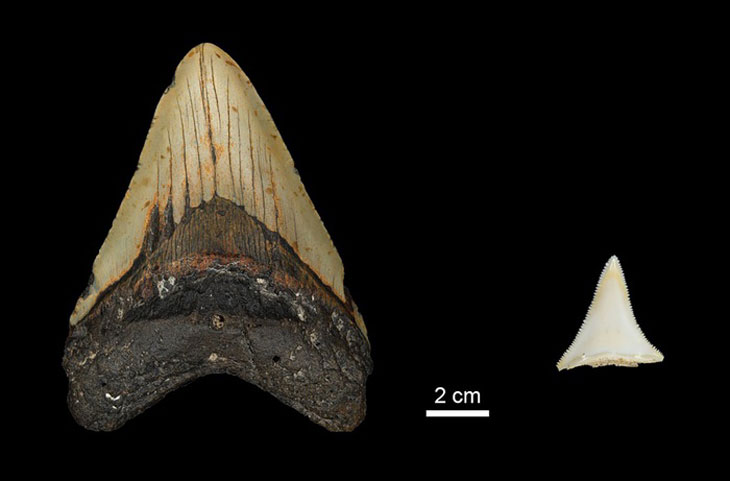An analysis of zinc isotopes present in the dental enamel of ancient sharks suggests that megalodon and great whites consumed the same type of prey, which would explain, at least in part, the disappearance of the gigantic prehistoric shark.
Prehistoric food competition
Measuring about fifteen meters long in adulthood, the fearsome megalodon died out around 3.5 million years ago, but the causes of the disappearance of this superpredator remain largely obscure. With previous research suggesting a shortage of resources, Kenshu Shimada and his colleagues from thedepaul university (Illinois) sought to establish more precisely its position in the food chain.
The skeleton of sharks being exclusively made up of cartilage, not conducive to fossilization, the authors of the new study, published in the journal NatureCommunicationsexamined the teeth of different prehistoric specimens to learn more about their way of life.
” My colleagues and I wanted to see if we could piece together the diet of megalodon and other extinct sharks, including the prehistoric great white, by studying zinc isotopes in their fossilized teeth. “, Explain shimada. ” While this approach had previously proven to be a powerful tool for determining the relative positions of various species in the food web, this is the first time it has been applied to sharks.. »

Striking Similarities
Using a dental drill, the team collected enamel fragments from 262 shark teeth (covering 20 living and 13 extinct species, including megalodon). The comparison of their levels of zinc, essential to animal life and coming mainly from food, allowed the highlighting of striking similarities.
The researchers found that the isotope ratio of zinc in the megalodon sample closely matched that of ancient great white sharks, suggesting a similar position within the early 19th century food web. Plioceneabout 5 million years ago, when these two species of apex predators coexisted.
According shimada, previous analyzes of fossilized bites had shown that great whites and megalodons likely shared a diet of small cetaceans, seals and sea lions. If the reasons for the extinction of the latter are probably multiple, the scientist believes that this new work reinforces the idea that food competition played an important role.
[related_posts_by_tax taxonomies=”post_tag”]
The post The great white shark would have largely contributed to the disappearance of the fearsome megalodon appeared first on Gamingsym.

